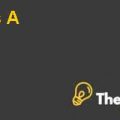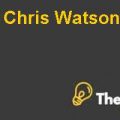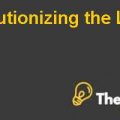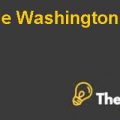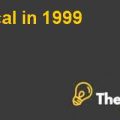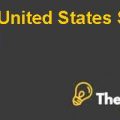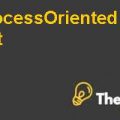INTRODUCTION
Tesco was incorporated in 1919 as a tea retailer.The company has performed exceptionally since its inception and it grew its business robustly by diversifying its products at a wide spread range and became the trail-blazer of the entire retailing industry of United Kingdom in early 2000’s.
The company has expanded its business in various markets across the world and performed efficiently and effectively, which has allowed the company to maintain the highest Compound Average Rate of 10.9%. In addition to this, in 2009, the company was awarded as a fourth largest global retailer in the international retailing industry.
The company has earned the confidence, satisfaction and loyalty of its customers, by facilitating its customers with excellent quality products as well as exceptional customer care services. This has allowed the company to capture a huge share in the entire industry and secure a leading position within the industry of retail business.
Tesco has made joint venture with Samsung in order to penetrate successfully in the Korean Market. The joint venture has made a new brand named Homeplus, in order to penetrate in the Korean retail market.
Homeplus has entered into the Korean retailing industry with a widespread products line as well as it also emphasizes on the customer relations, which acted as a competitive edge for Homeplus. The company has focused on the local retailing markets of Korea and made various strategies to dominate the entire market efficiently and effectively.
Homeplus has performed exceptionally in the entire Korean market by facilitating its customers with excellent quality products at low prices as well as facilitating its customers with exceptional customer care services. This has allowed the company to earn the loyalty of customers and had allowed the company to enhance its customer base robustly, which further acted as a competitive edge for Homeplus.
Lately, in 2003, the company faced the decline in the growth rate of discount stores, which has made the top management of the company concerned about diversifying its business structure in to various types and structures of retailing formats.
The company diversified its retailing format from discount retail stores to Super-Supermarkets (SSM). SSMs were small retail outlets which were situated in many residential neighborhoods, as well as, it offers daily necessities and households to its customers. In addition to this, the SSMs were relatively small in size than large discount retail stores but, on the other hand, they were larger than conventional retail stores.
Furthermore, since SSM was a new idea and they were more customers oriented, therefore, the SSM industry grew robustly over the period of time as well as many discount stores converted into SSM by looking at the massive potential present in the entire industry. This has increased the overall competition in the SSM market as well SSM market has also negatively affected on the mom and pop stores (Traditional Korean small grocers). SSM caused approximately 49.9% decline in the sales of mom and pop stores, as their customers were shifted towards SSM. Therefore, mom and pop stores created a serious protest against SSMs in order to regain their market.
Homeplus Riding The Korean Retail Rollercoaster Case Solution
PROBLEM STATEMENT:
“How to compete strongly in the highly competitive market of SSM, while managing robustly increasing diversification efficiently and effectively? Moreover, the top management of the company is also considered about responding the protest efficiently and effectively.”
COMPANY ANALYSIS:
Upon studying the case comprehensively, following facts and trends of the Homeplus have been depicted.
Quality Maintenance:
The top management of the company is considered towards facilitating its customers with excellent quality products. The company has maintained various quality check systems, in which the quality of the products of the company is checked on timely basis. In addition to this, the company has also employed latest quality maintenance technologies, as well as, quality control procedures.
This has allowed the company to ensure optimum quality products are delivered to customers. Moreover, this acts as a competitive edge for the company.
Pricing:
The company uses a low-balling technique in order to attract the customers towards the brand. In such technique, the company offers its products at low prices so that customers readily attract towards the product of the company. In addition to this, the consumers in the Korean market have a great disparity in level of income, therefore, the company offers various products ranging from high prices to low prices, in order to cater the needs of all customer segments efficiently and effectively.................
This is just a sample partial case solution. Please place the order on the website to order your own originally done case solution.

